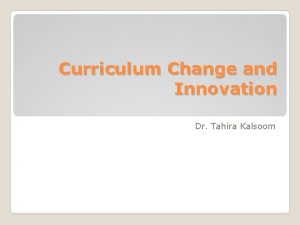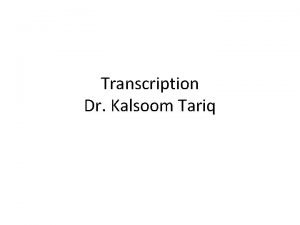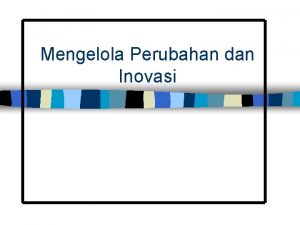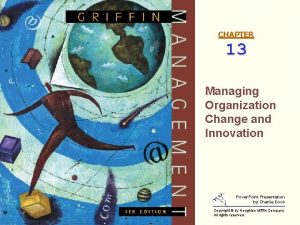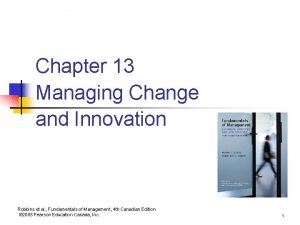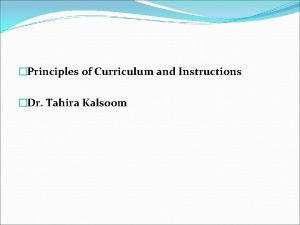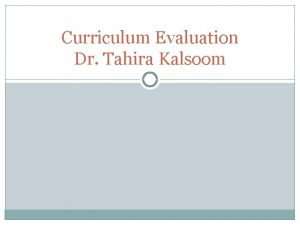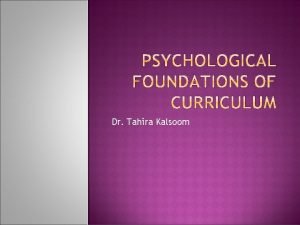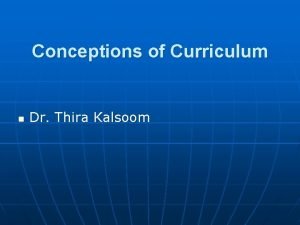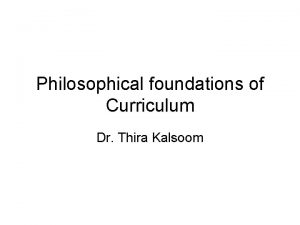Curriculum Change and Innovation Dr Tahira Kalsoom Sources









- Slides: 9

Curriculum Change and Innovation Dr. Tahira Kalsoom

�Sources of Change and Innovation �National Imposition �Societal needs �Technology Content

Substitution �� Alteration� �Addition �� Restructuring �Difference b/w the Innovation and Change �� Forms Of Changes

�Harris describes Curriculum innovation refers to ideas or practices that are new and different from those that exist in the formal prescribed curriculum. �it is planned and delibrated process. �Hoyle defines change as development, renewal and improvement of a curriculum due to external forces. � Curriculum Change

�The Linkage Model �The Social Interaction Approach �How Does the Rest of the process goes �Hardware Change �Curriculum change and Innovation �� Limitations of resources such as time, finance and energy. �Lack of motivat to change the curriculum.

�Models of curriculum change and innovation �The Research, Development and Diffusion Process Approach/model �Types of Curriculum Change �� Participative Problem-Solving �� Planned Linkage �� Coercive Strategies

� � � � Change & innovation difference Sources of Change & Innovation Types of change Forms of change Strategies Models Limitation Curriculum Innovation is conceived at the head or center and then fed into the system. This views the processes of change as a empiricalrational sequence of phases in which an innovation is: i. Invented or Discovered, ii. Developed, iii. diffused, iv. Disseminated To The User. Constrains of the Change & innovation

� Anaele (2008) reiterates that the linkage model unify and integrate three preceding � � � � � models. Hoyle (1993) state that the linkage process is based on the link between the school and the various specialized/centralized agencies linkage centers just like Anaele has suggested, may be in form of Professional Centers, Resource Centers, ICT centers, ect. These agencies are the linkage point between the national agencies of curriculum development, change and innovating schools, to provide consultancy services, and to offer in-service training for teachers as end users Also called problem reduction model. This model is built around the user of the innovation, who follows the steps below. i. Determine the problem. ii. Search for an innovation. iii. Evaluate the trials. iv. Implement the innovation. Anaele (2008) states that this model involves the transmission of knowledge by social group of school. He emphasizes that the model relates to the processes of diffusion of new ideas, practices or products. They described the unplanned process as the spread of new ideas or practices through contacts between and among teachers within a school, among schools, between teachers and supervisors, among all others(education bodies) Problem-Solving Model

�Strategies �Innovation process �Innovation planning �Innovation Implementation
